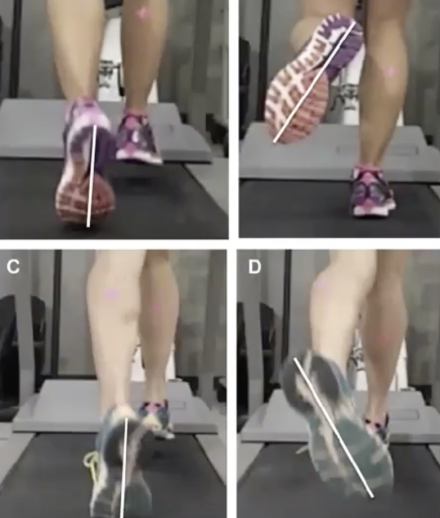Assistant Professor of Physical Therapy Education Shefali Christopher's third-year DPT students are practicing personalized physical therapy through virtual platforms.
Overstride, hip drop, foot strike – they’re all under close scrutiny when a physical therapist analyzes a runner’s gait. Poor step rate could lead to calf pain, overstride or excess impact could cause plantar fasciopathy. Safe running is all about the details.
“Teasing out the reasons for why and how a runner might be feeling pain is extremely important,” said Assistant Professor of Physical Therapy Shefali Christopher. “There are a thousand injured runners always, where ever you go and not many people understand running injuries, understand running evaluation and treatment.”
That’s why she teaches running gait analysis to students in DPT 804: Advanced Musculoskeletal Selective. The selective course is catered to students in their final year of Elon’s Doctor of Physical Therapy program. The six-week course covers a number of themes – advanced manual therapy, advanced work with special populations and running gait, to name a few.

Students recently completed the running gait analysis portion of the course in which they learned to evaluate a person’s technique and pinpoint potential issues in their running gait that could lead to pain or injury. The analyses are typically done live in the lab at the Gerald L. Francis Center, which houses the Elon School of Health Sciences. However, the COVID-19 pandemic and social distancing measures forced students to take a more virtual approach this year.
Instead of meeting in person, Christopher and her students transitioned to online classes using virtual conferencing tool WebEx to continue their studies. Students also learned to use mobile app Hudl Technique to evaluate runners on video. The app allowed them to analyze a runner’s flexibility, strength and mechanics virtually. Christopher used the app to explain how poor strength or flexibility in a runner’s gait can have a variety of negative impacts on the body.
Students recently used that knowledge to conduct running gait analyses of their own clients. Using videos recorded as part of a 2019 research study, students evaluated the gaits of a group of runners and conducted individualized physical therapy sessions with the participants to discuss their findings.
Students highlighted running gait issues like hip drop and forceful impact for the runners they analyzed, but for Lindsey Bauer’s group, the analysis was a bit trickier. The students evaluated a marathon runner who showed no glaring gait issues. The symptom-free running analysis forced Bauer’s group to hone in on what they’d learned to make sure they didn’t miss any potential PT problems. The virtual nature of the experience also required the group to take a different approach to their analysis.
 “Having it online forces us to utilize different communication techniques,” Bauer said. “When we can’t point to something because we’re not in the same room, we have to use our words to adequately describe what we’re seeing. Using those different cues that we wouldn’t typically rely on in an in-person setting allows us to tap into different areas of our brain, and it’s been great for becoming a better clinician no matter what we’re treating.”
“Having it online forces us to utilize different communication techniques,” Bauer said. “When we can’t point to something because we’re not in the same room, we have to use our words to adequately describe what we’re seeing. Using those different cues that we wouldn’t typically rely on in an in-person setting allows us to tap into different areas of our brain, and it’s been great for becoming a better clinician no matter what we’re treating.”
Bauer said the transition to online learning has also shown DPT students the importance of technology in their field. As physicians around the world have more frequently relied on telehealth options to safely treat patients during the COVID-19 pandemic, Elon DPT faculty have challenged students to embrace change.
“Our professors are doing an incredible job to make this experience interactive still, and they’re really pushing us to think outside of our comfort zone,” Bauer said.
Part of that push is continuing to offer students hands-on experiences like the running gait analysis lessons, even when they’re physically away from campus.
“For students to pursue their passions, their dreams, it’s really important that we’re still able to teach them important skills,” Christopher said.


